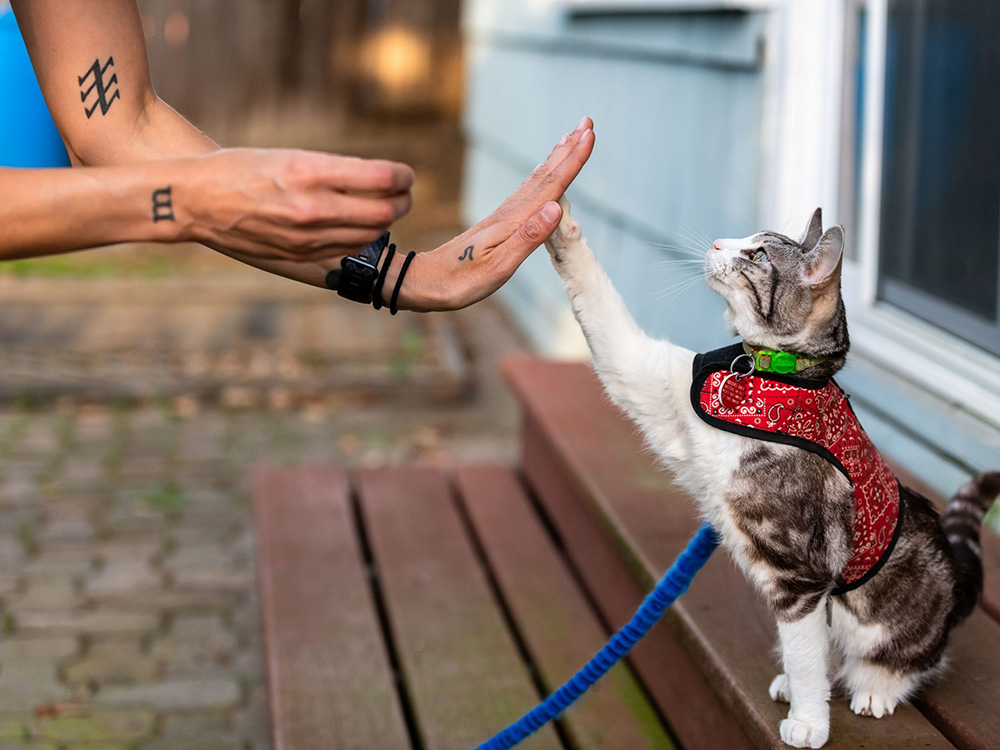Solving Cat Behavior Problems
Introduction:
Cats are beloved companions, but their behavior can sometimes be perplexing and challenging. If you’re struggling with cat behavior problems, you’re not alone. Cats have a complex range of natural behaviors, and understanding these behaviors is the key to resolving any issues. In this comprehensive guide, we’ll explore common cat behavior problems and provide expert solutions to help you restore harmony in your feline household.
1. Scratching Furniture and Carpets:
Behavior: Cats have a natural instinct to scratch surfaces to mark their territory, exercise their claws, and keep them healthy. Unfortunately, this behavior can be destructive to your furniture and carpets.
Solution:
- Provide appropriate scratching options: Invest in sturdy scratching posts or scratchboards and place them in strategic locations around your home. Encourage your cat to use these by rubbing catnip or treats on them.
- Trim your cat’s nails regularly: Regularly trimming your cat’s nails reduces the damage they can cause to furniture. Use a cat-specific nail trimmer and be gentle to avoid causing pain.
- Create a designated scratching area: Consider creating a cozy scratching area for your cat, equipped with interactive toys and scratching surfaces. This will encourage them to direct their scratching behavior towards these designated areas.
2. Aggression and Biting:
Behavior: Cats can exhibit aggressive behavior due to various factors, such as fear, territorial disputes, or medical issues. Biting is a common form of aggression.
Solution:
- Identify the underlying cause: Determine the root cause of your cat’s aggression. It could be a medical condition, a stressor in their environment, or a territorial dispute. Address the underlying issue to alleviate the aggression.
- Provide a safe and comfortable environment: Create a safe and secure space for your cat, away from potential stressors. This could be a quiet room or a cozy cat tree where they can feel secure.
- Establish boundaries: Set clear boundaries and rules for your cat. Teach them what behaviors are unacceptable and consistently redirect them when they exhibit aggressive tendencies.
- Seek professional help: If your cat’s aggression is severe or persists, consult a veterinarian or animal behaviorist for personalized advice and treatment options.
3. Litter Box Issues:
Behavior: Litter box issues are a common concern for cat owners. Cats may avoid using the litter box, urinate or defecate outside the designated area, or display spraying behavior.
Solution:
- Ensure a clean litter box: Cats are sensitive to cleanliness, so make sure to scoop and change the litter box regularly. Use a litter that your cat prefers and experiment with different textures and scents to find one they like.
- Provide multiple litter boxes: Having multiple litter boxes, especially in multi-cat households, can prevent territorial issues and reduce the chances of accidents. Place the boxes in private, easily accessible locations.
- Address health problems: Underlying health issues, such as urinary tract infections or digestive problems, can lead to litter box issues. If your cat suddenly starts avoiding the litter box, consult your veterinarian to rule out medical causes.
- Encourage positive litter box use: Make using the litter box a positive experience for your cat. Offer treats or praise after they successfully use it. You can also try using pheromone diffusers or sprays to create a calming environment around the litter box area.
4. Excessive Meowing or Vocalization:
Behavior: Excessive meowing or vocalization can be a sign of distress, boredom, or attention-seeking.
Solution:
- Determine the cause: Identify what triggers your cat’s excessive vocalization. Is it hunger, boredom, stress, or separation anxiety? Address the underlying issue to reduce the vocalizations.
- Provide mental stimulation: Cats need mental and physical stimulation to stay happy and content. Engage your cat in interactive play sessions, provide puzzle toys, or create an enriching environment with climbing structures and hiding places.
- Ignore unwanted vocalizations: When your cat vocalizes excessively for attention, resist the urge to respond. Giving them attention when they meow will reinforce the behavior. Instead, ignore them until they stop, and then offer positive reinforcement when they remain quiet.
- Consult your veterinarian: If your cat’s excessive vocalization is persistent and seems out of character, it’s essential to consult your veterinarian to rule out any underlying medical conditions.
5. Destructive Behavior:
Behavior: Cats may engage in destructive behaviors, such as chewing on furniture, knocking over objects, or tearing up curtains.
Solution:
- Identify the cause: Destructive behavior can be a sign of boredom, stress, or anxiety. Determine the underlying cause and address it to reduce the destructive tendencies.
- Provide a stimulating environment: Keep your cat mentally and physically active by providing interactive toys, climbing structures, and hiding places. Ensure they have access to safe and appropriate chewing objects, such as chew toys or edible cat treats, to redirect their chewing behavior.
- Set boundaries and rules: Establish clear boundaries and rules for your cat. Discourage destructive behavior by providing alternatives and consistently redirecting them when they engage in unwanted behaviors.
- Consult a veterinarian or animal behaviorist: If your cat’s destructive behavior persists or is severe, consider consulting a veterinarian or animal behaviorist for personalized advice and treatment options.
Conclusion:
Every cat is unique, and solving behavior problems requires patience, understanding, and consistent effort. By addressing the underlying causes, providing appropriate outlets for natural behaviors, and establishing clear boundaries, you can help your feline companion overcome behavior problems and create a harmonious household. Remember, if you find yourself struggling with persistent or severe behavior issues, don’t hesitate to seek professional help from your veterinarian or an experienced animal behaviorist.







